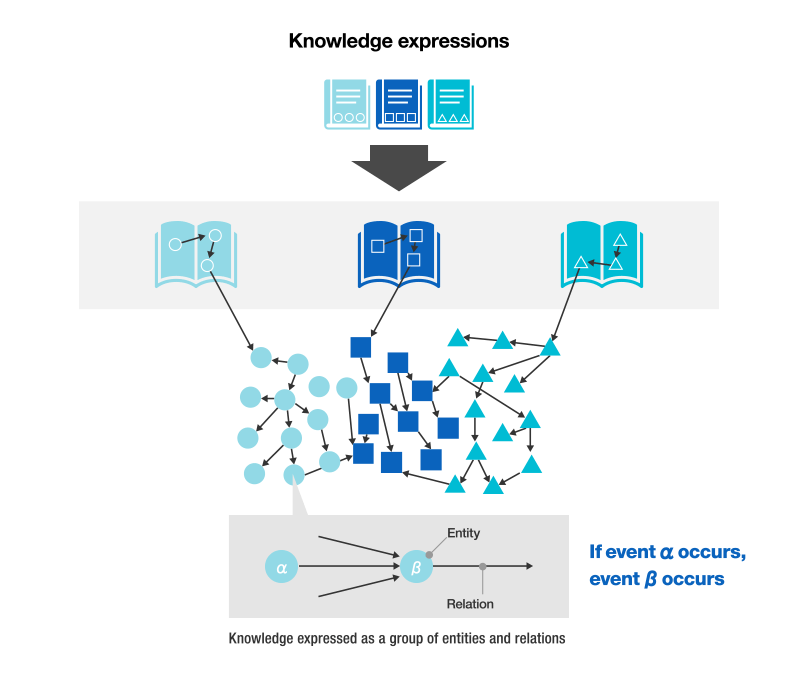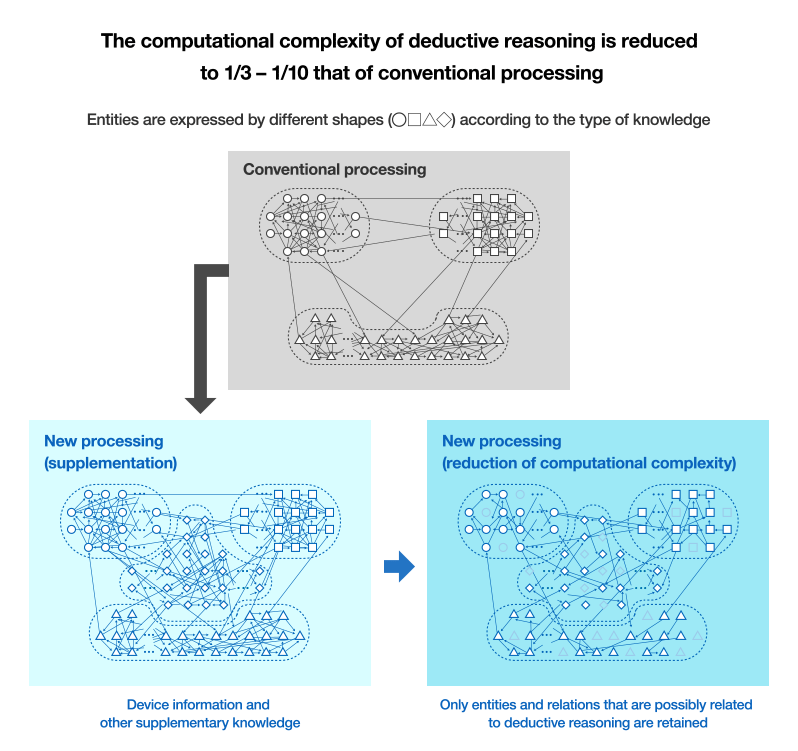

Knowledge processing
Understands people’s complex intentions and actions and supports speedy decision-making.
What is knowledge processing?
Knowledge processing is the systematization of such information as common human knowledge, experience and sensations so that machines can understand people, or people can understand machines.
When we are asked to do something by someone or we engage in a task in cooperation with someone else, we not only try to understand the other person’s intention by his/her words and gestures, but we also make up for any lack of information with common human knowledge and experience.
In knowledge processing, common human knowledge and experience are systematized by a set of rules that promote mutual understanding between machines and people, such as rules that "if event A occurs, event B takes effect." By organically linking information about people’s intentions gained from dialogue with systematized knowledge, mutual understanding can be achieved between machines and people.
Strengths of Mitsubishi Electric
The computational complexity of knowledge processing is reduced to allow edge devices to understand people’s ambiguous expressions.
When talking to another person, people tend to omit articulating their intentions, hoping that the other person will understand. For example, verbs and objects are frequently omitted from people’s utterances. Machines, however, cannot accurately understand people’s intentions if they are not expressly articulated.
Mitsubishi Electric has therefore developed a knowledge processing technology that flexibly expresses various information such as common human knowledge, experience, sensing information and device information in the form of a group of entities and relations referred to as a knowledge graph according to each situation and automatically supplements any verbs and objects that are lacking through machine learning.
Mitsubishi Electric has furthermore developed a technology that reduces the computational complexity of knowledge processing to approximately 1/3 to 1/10 that of conventional processing by selecting only the necessary entities according to each situation. This allows single edge devices to use knowledge graphs to automatically supplement information that is lacking, quickly understand users’ ambiguous expressions and support people’s decision-making.

